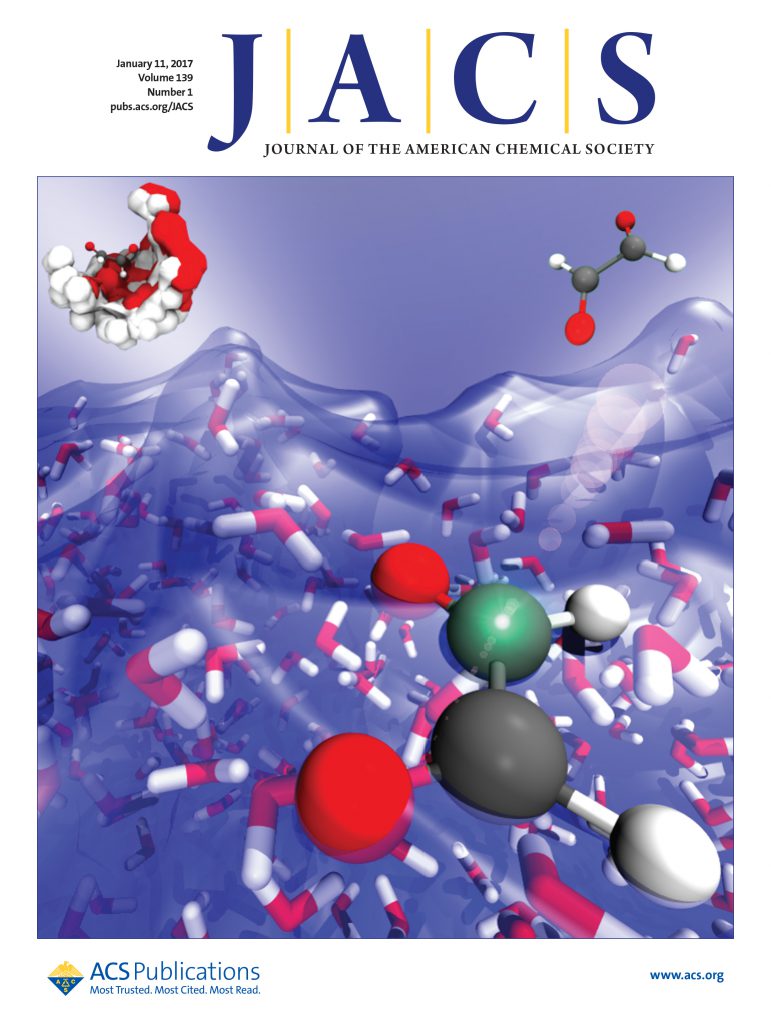IF 14.4
1区 化学
Q1 CHEMISTRY, MULTIDISCIPLINARY
引用次数: 0
摘要
由于多硫化钠的高溶解度和由此产生的穿梭效应影响了循环稳定性和效率,钠硫电池面临着巨大挑战。本研究引入了硫氧化还原的 Cu(111) 面选择性反应,促进形成稳定的中间体 NaCu5S3,从而实现高效的硫转换、快速的离子传输和完全固-固反应途径。该系统性能卓越,在 0.5 A g-1 的条件下循环 800 次仍能保持 602 mAh g-1 的比容量,在以乙醚为基础的电解质中以 5 A g-1 的高电流密度提供 463 mAh g-1 的比容量,这代表了硫含量≥ 60 wt % 的阴极的最高速率能力。与 Cu(100)、Cu(110) 和铝基底的比较研究凸显了 Cu(111) 的独特反应性。密度泛函理论计算进一步揭示了铜和多硫化钠之间的结构和电子相互作用,阐明了面依赖机制。这项研究将切面工程确立为调节硫氧化还原途径和提高金属硫电池电化学可逆性的一种有前途的方法。本文章由计算机程序翻译,如有差异,请以英文原文为准。

Cu-Facet Selective Sulfur Chemistry for Ultrastable Sodium–Sulfur Batteries
Sodium–sulfur batteries face significant challenges due to the high solubility of sodium polysulfides and the resulting shuttle effect, which compromise cycling stability and efficiency. This study introduces the Cu(111) facet-selective reactivity of sulfur redox, which promotes the formation of a stable intermediate, NaCu5S3, enabling efficient sulfur conversion, rapid ionic transport, and a fully solid–solid reaction pathway. The system achieves exceptional performance, retaining a specific capacity of 602 mAh g–1 over 800 cycles at 0.5 A g–1 and delivering 463 mAh g–1 at a high current density of 5 A g–1 in ether-based electrolytes, representing the highest rate capability reported for cathodes with sulfur content ≥ 60 wt %. Comparative studies with Cu(100), Cu(110), and aluminum substrates highlight the unique reactivity of Cu(111). Density functional theory calculations further reveal the structural and electronic interactions between copper and sodium polysulfides, clarifying the facet-dependent mechanisms. This work establishes facet engineering as a promising approach to modulating sulfur redox pathways and improving the electrochemical reversibility in metal–sulfur batteries.
求助全文
通过发布文献求助,成功后即可免费获取论文全文。
去求助
来源期刊
CiteScore
24.40
自引率
6.00%
发文量
2398
审稿时长
1.6 months
期刊介绍:
The flagship journal of the American Chemical Society, known as the Journal of the American Chemical Society (JACS), has been a prestigious publication since its establishment in 1879. It holds a preeminent position in the field of chemistry and related interdisciplinary sciences. JACS is committed to disseminating cutting-edge research papers, covering a wide range of topics, and encompasses approximately 19,000 pages of Articles, Communications, and Perspectives annually. With a weekly publication frequency, JACS plays a vital role in advancing the field of chemistry by providing essential research.

 求助内容:
求助内容: 应助结果提醒方式:
应助结果提醒方式:


